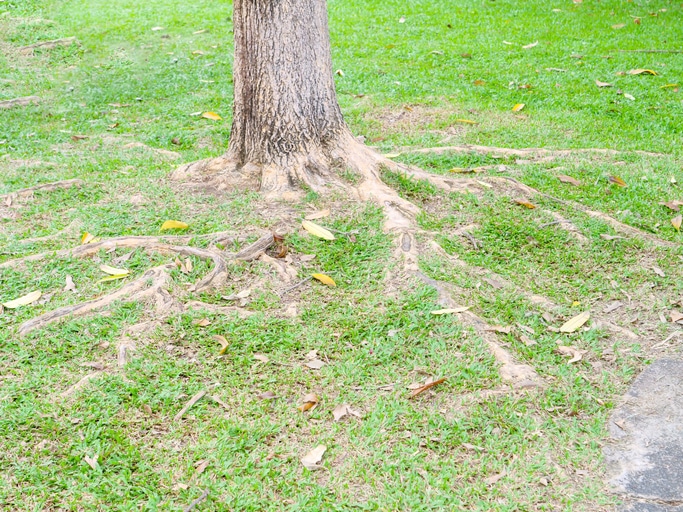Should you regularly water your foundation the way you water plants? Homeowners may wonder if this is an effective strategy for keeping your foundation stable or just a myth. In reality, watering your foundation on a regular basis can have a positive effect, and may contribute to saving you thousands of dollars in foundation repairs down the road.
Why Soil Needs Watering
Though we mention watering the foundation, you are actually watering the soil. Why is this necessary? Think of the soil as a giant sponge; it swells as it absorbs water and shrinks as it dries. The degree of swelling and shrinkage differs depending on the soil type. The North Texas region has a strong concentration of clay, which are highly porous, making the swelling and shrinking very pronounced.
The soil tends to expand at its peak during winter and spring when high humidity and rain is commonplace. The soil dries and shrinks down during the hot summers and subsequent fall. The soil is essentially in a never-ending cycle of expanding and contracting.
What does this mean for your foundation? Since the foundation rests on the soil and beneath it, it will move and shift as the soil undergoes its cycles of moisture absorption and drying out. Over time, this causes the foundation to split and crack; the same can also occur in the walls, floors, and ceilings.
Furthermore, the expansion and contraction may not occur evenly among the soil, causing the foundation to move in multiple directions or excessively slope to one side.
How Watering Prevents Foundation Damage
Watering the soil prevents it from becoming excessively dry, thus avoiding the extreme end of soil contraction. This keeps the contrast between the soil swelling and contracting minimal, thus reducing the chance of foundational shifts. As long as you water the soil evenly, it will help prevent uneven swelling and contracting.
How to Water the Foundation
There are several ways you can water the foundation. One way is to plant leafy shrubs or other plants with non-invasive roots along the home perimeter and keep them watered year-long. Avoid large trees and shrubs, as their roots can consume excessive quantities of water from the soil.
Another approach is to invest in a soaker hose. Turn it on once a day or set it on an automatic timer. If you don’t have a soaker hose or do not wish to plant additional shrubs or greens, then go for the simple manual approach of lightly hosing the soil daily. This is especially beneficial during the dry seasons. Water from the perimeter of the house to about three to four feet out. Be sure to water every part of the perimeter that comes into contact with the soil.
A sprinkler is also a great option for watering the foundation around your home. Ideally, you want to place the sprinkler such that the water lands on the soil that is 10-15 inches away from the foundation, rather than on the foundation itself. If you have a timer, set it to water the area for 15-20 minutes.
Don’t Forget to Schedule Routine Inspections
Doing foundation watering is one form of damage prevention but should not be your only one. Regular inspections from our Dallas-Fort Worth foundation repair service are highly recommended. Give us a call today and schedule your home foundation inspection. We operate across the metroplex, see our foundation repair service areas.






